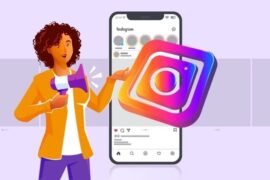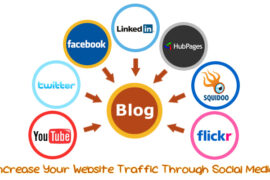Driving Traffic from Social Media without Ads
In today’s digital age, social media has become an indispensable tool for businesses to connect with their target audience, build brand awareness, and drive traffic to their websites. While paid advertising can be effective, it’s not the only way to generate traffic from social media. In this article, we will explore strategies and tactics that can help you leverage the power of organic reach to drive traffic to your website without relying on ads.
-
Develop a Compelling Social Media Strategy
To generate traffic organically, it’s crucial to have a well-defined social media strategy. Start by identifying your target audience and the platforms they frequent the most. Then, create a content plan that aligns with your audience’s interests and provides value. Consistency is key, so establish a regular posting schedule to maintain engagement and visibility.
-
Engage and Interact with Your Audience
Building a strong presence on social media requires active engagement. Respond to comments, messages, and mentions promptly. Encourage conversations by asking questions, running polls, or hosting live Q&A sessions. By nurturing these interactions, you can build trust, loyalty, and ultimately drive traffic through organic word-of-mouth referrals.
-
Harness the Power of Visual Content
Visual content, such as images, videos, and infographics, is highly shareable and can help increase your organic reach. Create visually appealing content that is relevant to your audience and encourages them to share it with their networks. Eye-catching visuals not only attract attention but also make your brand more memorable, increasing the likelihood of website visits.
-
Optimize Your Profiles and Bio
Make sure your social media profiles are complete, up to date, and optimized for search. Use relevant keywords in your bio, include a link to your website, and showcase your unique selling points. This helps search engines index your profiles and improves your chances of appearing in relevant search results, driving traffic to your website.
-
Leverage User-Generated Content
User-generated content (UGC) is a powerful tool for increasing brand visibility and driving traffic. Encourage your followers to share their experiences with your products or services, and highlight the best UGC on your social media platforms. UGC not only boosts engagement but also inspires trust in your brand, leading to increased website traffic as people seek to learn more.
-
Collaborate with Influencers and Industry Experts
Influencer marketing continues to be a popular strategy for reaching a wider audience. Identify influencers or industry experts who align with your brand values and target audience. Collaborate with them through guest posting, joint contests, or social media takeovers. Their endorsement and exposure can significantly increase your brand visibility and website traffic.
-
Participate in Relevant Communities and Discussions
Engage with niche-specific communities and discussions on social media platforms related to your industry. Share your expertise, answer questions, and provide valuable insights. By becoming an active participant, you can position yourself as an authority and drive traffic from users who are genuinely interested in your area of expertise.
-
Cross-Promote Your Content
Leverage the power of cross-promotion by sharing your website content across different social media platforms. Tailor your content to each platform’s format and audience preferences. For example, use visually rich images for Instagram, share bite-sized tips on Twitter, and create longer-form content for LinkedIn. By diversifying your content and reaching users on multiple platforms, you increase your chances of driving traffic.
list of popular social media tools that can help you manage, analyze, and enhance your social media presence:
- Hootsuite: A comprehensive social media management platform that allows you to schedule posts, monitor mentions and keywords, and analyze your social media performance across multiple platforms.
- Buffer: A scheduling tool that enables you to plan and publish posts on various social media platforms. It also provides analytics to track the performance of your content.
- Sprout Social: A social media management and analytics tool that helps you schedule and publish posts, engage with your audience, and measure the impact of your social media efforts.
- Later: A visual content scheduling tool specifically designed for Instagram. It allows you to plan and preview your Instagram posts, schedule them in advance, and analyze your account’s performance.
- Canva: A graphic design platform that offers pre-designed templates and tools to create eye-catching visuals for your social media posts, cover images, and advertisements.
- BuzzSumo: A content discovery and analysis tool that helps you find popular and trending content on social media. It also provides insights into the performance of your own content and competitor analysis.
- Google Analytics: While not exclusively a social media tool, Google Analytics is a powerful tool for tracking the traffic generated from social media to your website. It helps you understand which social media channels are driving the most engagement and conversions.
- Mention: A social media listening and monitoring tool that allows you to track brand mentions, industry keywords, and relevant conversations across various social media platforms and the web.
- Bitly: A URL shortening tool that not only shortens your links but also provides analytics on link clicks, allowing you to track the performance of your shared links on social media.
- SocialBakers: A social media analytics and benchmarking tool that provides insights into audience demographics, engagement metrics, and competitor analysis across multiple social media platforms.
Here’s a table listing popular social media platforms along with their Domain Authority (DA) scores.
| Social Media Platform | Domain Authority (DA) |
|---|---|
| 96 | |
| 94 | |
| 98 | |
| 93 | |
| 94 | |
| YouTube | 99 |
| Snapchat | 94 |
| 91 | |
| TikTok | 93 |
| Tumblr | 88 |
| 98 | |
| 96 | |
| Medium | 96 |
Conclusion
While paid ads can be effective, organic reach on social media remains a valuable asset for driving website traffic. By developing a well-rounded social media strategy, engaging with your audience, optimizing your profiles, leveraging visual content, and tapping into user-generated content and influencer collaborations, you can unlock the





